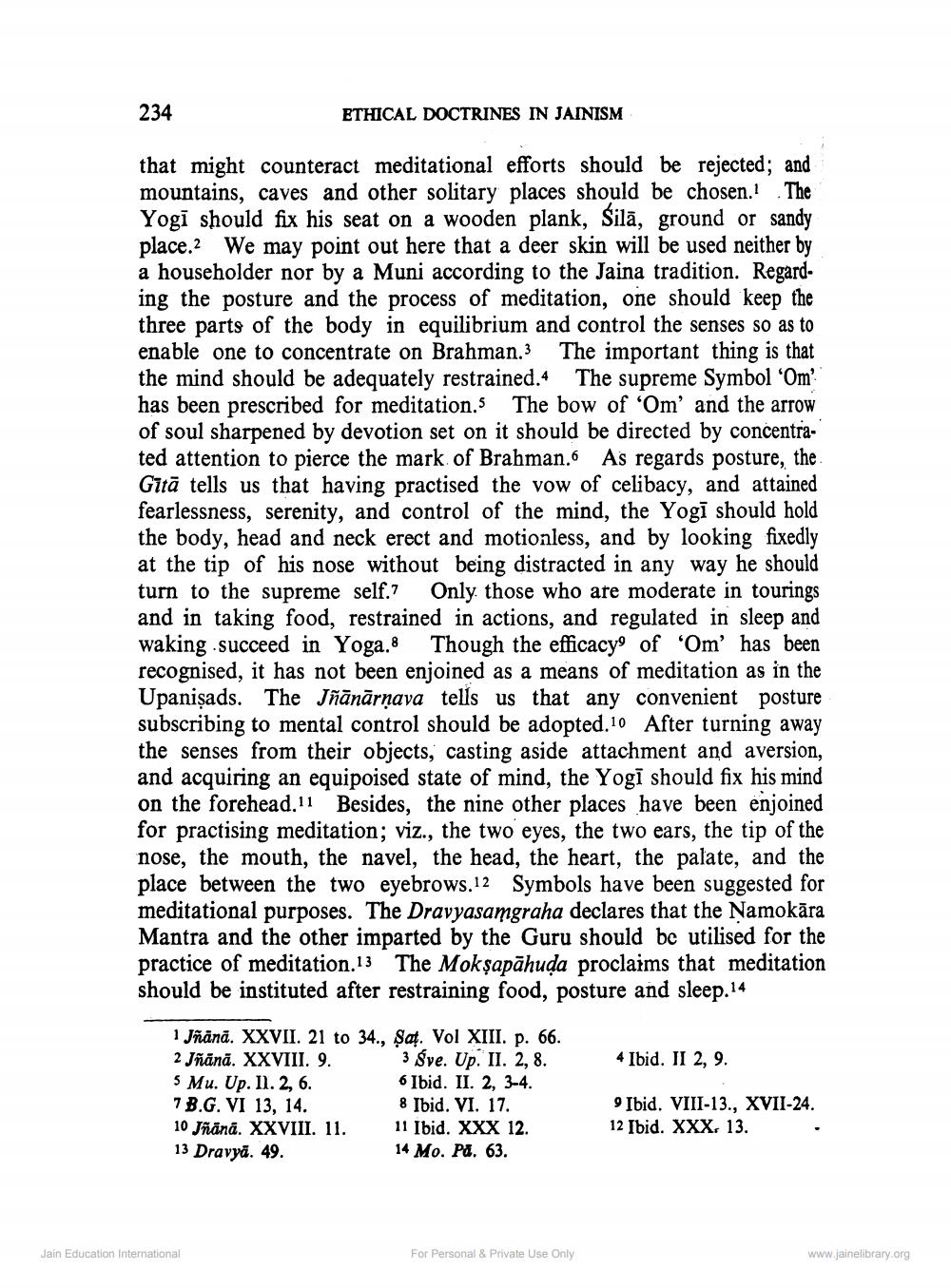________________
234
ETHICAL DOCTRINES IN JAINISM
that might counteract meditational efforts should be rejected; and mountains, caves and other solitary places should be chosen. The Yogi should fix his seat on a wooden plank, Silā, ground or sandy place. We may point out here that a deer skin will be used neither by a householder nor by a Muni according to the Jaina tradition. Regarding the posture and the process of meditation, one should keep the three parts of the body in equilibrium and control the senses so as to enable one to concentrate on Brahman.3 The important thing is that the mind should be adequately restrained. The supreme Symbol 'Om' has been prescribed for meditation. The bow of 'Om' and the arrow of soul sharpened by devotion set on it should be directed by concentrated attention to pierce the mark of Brahman. As regards posture, the Gitā tells us that having practised the vow of celibacy, and attained fearlessness, serenity, and control of the mind, the Yogi should hold the body, head and neck erect and motionless, and by looking fixedly at the tip of his nose without being distracted in any way he should turn to the supreme self.? Only those who are moderate in tourings and in taking food, restrained in actions, and regulated in sleep and waking succeed in Yoga.8 Though the efficacy of 'Om' has been recognised, it has not been enjoined as a means of meditation as in the Upanişads. The Jñānārņava tells us that any convenient posture subscribing to mental control should be adopted. 10 After turning away the senses from their objects, casting aside attachment and aversion, and acquiring an equipoised state of mind, the Yogi should fix his mind on the forehead.11 Besides, the nine other places have been enjoined for practising meditation, viz., the two eyes, the two ears, the tip of the nose, the mouth, the navel, the head, the heart, the palate, and the place between the two eyebrows.12 Symbols have been suggested for meditational purposes. The Dravyasamgraha declares that the Namokāra Mantra and the other imparted by the Guru should be utilised for the practice of meditation.13 The Moksapāhuda proclaims that meditation should be instituted after restraining food, posture and sleep. 14
4 Ibid. II 2, 9.
1 Jñanā. XXVII. 21 to 34., $at. Vol XIII. p. 66. 2 Jñanā. XXVIII. 9. 3 Sve. Up. II. 2, 8. 5 Mu. Up. II. 2, 6.
6 Ibid. II. 2, 3-4. 7 B.G. VI 13, 14.
8 Ibid. VI. 17. 10 Jñana. XXVIII. 11. 11 Ibid. XXX 12. 13 Dravyā. 49.
14 Mo. Pa. 63.
Ibid. VIII-13., XVII-24. 12 Ibid. XXX. 13.
Jain Education International
For Personal & Private Use Only
www.jainelibrary.org




